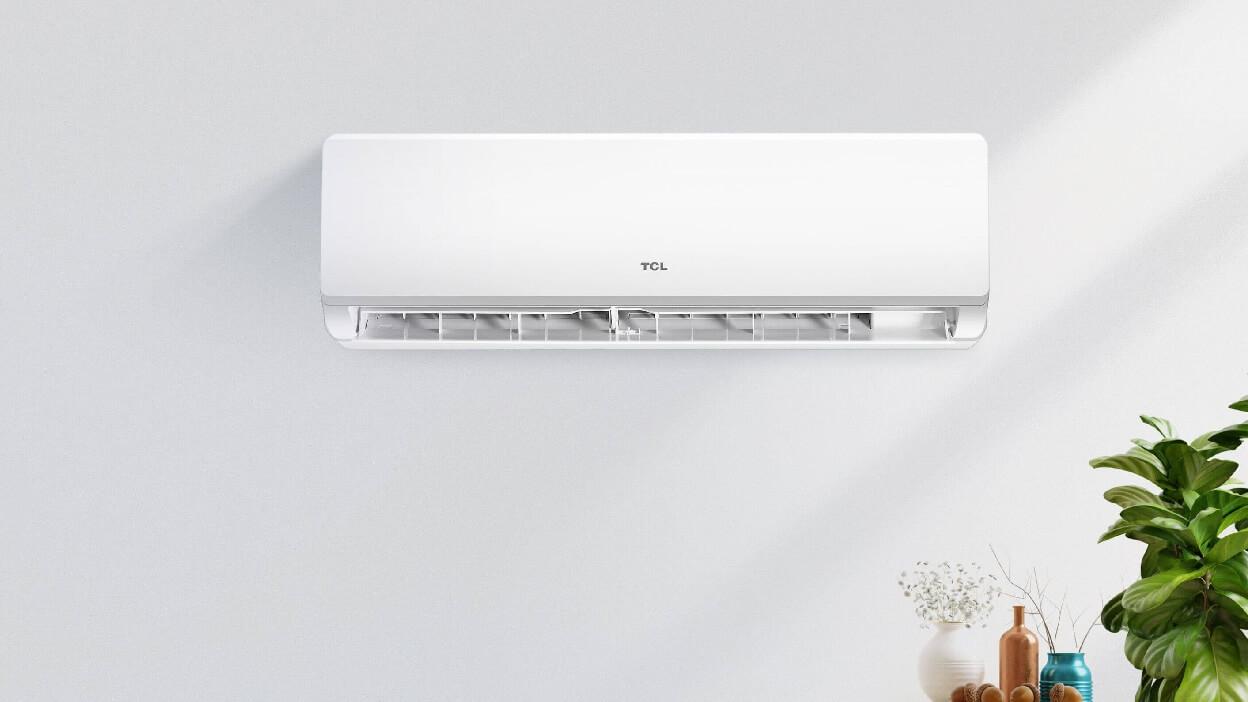Introduzione
Se siete alla ricerca di un nuovo telefono, probabilmente avrete sentito parlare molto del 5G. Ma cos'è esattamente? E come si differenzia dal 4G? In questo articolo vi spieghiamo tutto quello che c'è da sapere sul 5G rispetto al 4G!
Cosa sono il 5G e il 4G?
Il 4G, la quarta generazione della tecnologia di rete mobile, è il precursore del 5G. Negli anni 2010, il 4G ha rappresentato la generazione più recente e innovativa, raggiungendo l'ubiquità nel giro di un decennio.
Il 5G è la quinta generazione (e l'ultima) della tecnologia di rete cellulare. Si prevede che queste reti 5G forniranno velocità di trasmissione dati più elevate, latenza più bassa e molte più connessioni rispetto alle precedenti generazioni.
Onde di frequenza
Iniziamo parlando di come il 5G e il 4G siano diversi in termini di frequenza.
Una differenza fondamentale è che le reti 5G utilizzano frequenze radio uniche per realizzare ciò che le reti 4G non possono fare. Mentre alcune reti 5G utilizzano frequenze più elevate, come quelle a 30 GHz o più, il 4G utilizza frequenze inferiori a 6 GHz.
Queste frequenze elevate sono vantaggiose per una serie di motivi, il più importante dei quali è che supportano una grande capacità di trasmissione rapida dei dati. Non solo sono meno congestionate dai dati cellulari esistenti e quindi possono essere utilizzate in futuro per aumentare le richieste di larghezza di banda, ma sono anche altamente direzionali e possono essere utilizzate direttamente accanto ad altri segnali wireless senza causare interferenze.
Si tratta di una differenza significativa rispetto alle torri 4G, che potrebbero sprecare energia e potenza trasmettendo onde radio in luoghi in cui le persone non stanno nemmeno cercando di accedere a Internet.
In breve, le reti 5G possono trasmettere dati ultraveloci a un numero maggiore di utenti, con un'elevata precisione.
Velocità
In teoria, il 5G sarà molto più veloce del 4G. In condizioni ideali, la velocità di download del 5G può superare i 10 gigabit al secondo. Si tratta di una velocità fino a 100 volte superiore a quella del 4G ed è indubbiamente il livello di prestazioni richiesto da una società sempre più connessa.
Anche adesso, con la tecnologia 5G nelle prime fasi di sviluppo, le velocità sono fulminee. Queste capacità sono importanti perché consentono nuove applicazioni e servizi che prima non erano possibili.
Ad esempio, la velocità degli smartphone 5G della Serie TCL 30 raggiunge i 2,69 Gbps⁴, consentendo di scaricare un film in pochi minuti. Su una rete 4G questo richiede in media 50 minuti.
Latenza
La latenza si riferisce al tempo necessario al segnale proveniente dal dispositivo (ad esempio, computer o smartphone) per raggiungere la destinazione (ad esempio, il server di un sito web). Tassi di latenza vengono considerati bassi, pari a circa 20 millisecondi (ms) o meno, tra l'invio di un messaggio elettronico e la ricezione della conferma che è stato consegnato correttamente senza errori lungo il percorso, mentre tassi di latenza elevati aumentano i fattori di rischio, come le cadute di connessione durante i giochi online o le videochiamate con FaceTime o Skype.
La latenza per il 4G è in media di 200 millisecondi, che si avvicina ai 250 millisecondi necessari all'uomo per rispondere a uno stimolo visivo. Tuttavia, la latenza del 5G è sostanzialmente inferiore: solo 1 millisecondo.
Questo enorme salto sarà fondamentale per lo sviluppo di nuovi servizi e dispositivi.
Capacità di connettività
Il 4G a volte ha problemi a supportare un gran numero di dispositivi in un unico luogo. È un problema che alcuni di noi hanno riscontrato quando hanno cercato di utilizzare i telefoni durante eventi sportivi o concerti affollati. Trasmettendo in modo intelligente a ciascun dispositivo con grande precisione, il 5G risolve questo problema e può supportare fino a 1 milione di dispositivi per chilometro quadrato.
Questa precisione riduce il rumore nel 5G, rendendo più facile la connessione di più dispositivi. Data la crescita del numero di dispositivi connessi alla rete ogni anno, la capacità di connettere ulteriori dispositivi è fondamentale.
Secondo il rapporto sulla mobilità di Ericsson del 2021, il 5G rappresenterà oltre la metà di tutti gli abbonamenti alla telefonia mobile entro il 2027, quando si stima che gli abbonamenti totali raggiungeranno i 4,4 miliardi. Si tratta di un aumento rispetto ai 660 milioni previsti l'anno scorso. Alla fine del 2020, il 4G aveva raggiunto più dell'80% della popolazione mondiale.
Conviene acquistare un telefono 5G o un telefono 4G nel 2023?
Se state valutando l’acquisto di un nuovo telefono in questo momento, noterete che da quando i primi smartphone 5G sono stati introdotti nel 2019 sono ora ampiamente disponibili e più convenienti che qualche anno fa.
Ora, ciò che dobbiamo prendere in considerazione è se il vostro operatore supporta le reti 5G e offre pacchetti 5G. In caso affermativo, se la vostra zona ha una copertura di rete 5G o se prevede di coprirla in futuro.
I telefoni 5G offriranno ovviamente prestazioni migliori rispetto ai 4G. Lo svantaggio? Tendono anche ad avere un prezzo più alto a causa delle caratteristiche più avanzate - ma se volete che il vostro dispositivo funzioni perfettamente quando è connesso a una rete 5G, allora vale la pena pagare un extra per uno di questi dispositivi.
I telefoni 5G possono utilizzare sia la tecnologia 4G che quella 5G, il che vi consentirà di accedere alla copertura di rete 4G indipendentemente dal luogo in cui vi trovate, mentre solo alcune città hanno attualmente accesso al servizio 5G.
Scoprite gli smartphone 5G e i cellulari 4G di TCL se volete sperimentare la nuova tecnologia e massimizzare il vostro intrattenimento!
Seguici su Facebook e Instagram per non perderti le ultime novità.
Introduction
If you're in the market for a new phone, you've probably heard a lot about 5g. But what is it, exactly? And how does it differ from 4g? In this article, we explain everything you need to know about 5G vs 4G!
What are 5G and 4G?
4G, the fourth generation of mobile network technology, is the forerunner to 5G. In the 2010s, 4G was the most recent and innovative generation of cellular technology, reaching ubiquity within a decade.
5G is the fifth generation ( and the latest generation) of cellular network technology. 5G cellular networks are expected to provide higher data rates, lower latency, and many more connections than previous generations of cellular network technologies.
Frequency waves
Let's start by talking about how 5G and 4G are different in terms of frequency.
One critical difference is that 5G networks use unique radio frequencies to accomplish what 4G networks cannot. While some 5G networks use higher frequencies, such as those at 30 GHz or more, 4G uses frequencies below 6 GHz.
These high frequencies are beneficial for a variety of reasons, the most notable of which is that they support a large capacity for rapid data. They are not only less congested with existing cellular data and so can be used in the future for increased bandwidth demands, but they are also highly directional and can be used directly next to other wireless signals without causing interference.
This is significantly different from 4G towers, which might possibly waste energy and power by beaming radio waves at places where people aren't even trying to access the internet.
In short, 5G networks can broadcast ultrafast data to a lot more users, with high precision.
Speed
Theoretically speaking, 5G will be much faster than 4G. Under ideal conditions, 5G download rates can exceed 10 gigabits per second. That's up to 100 times quicker than 4G, and it's unquestionably the level of performance required for an increasingly connected society.
Even now, with 5G technology still in its early stages of development, speeds are lightning fast. This speed and capacity are important because they enable new applications and services that weren't possible before.
For example, TCL 30 5G smartphone speed up to 2.69 Gbps⁴, allowing a movie to be downloaded within minutes. This takes, on average, 50 minutes on a 4G network.
Latency
Latency refers to how long it takes for your signal from your device (e.g., computer or smartphone) to reach its destination (e.g., website server). With low latency rates of around 20 milliseconds (ms) or less between sending an electronic message and receiving confirmation that it has been delivered successfully without errors along the way; high latency rates increase risk factors such as connection drops while gaming online or chatting with friends through video calling apps such as FaceTime or Skype where accuracy matters most.
Latency for 4G is on average 200 milliseconds, which is close to the 250 milliseconds it takes humans to respond to visual stimuli. However, 5G latency is substantially lower: only 1 millisecond.
This huge leap will be critical in the development of new services and devices.
Connectivity Capacity
4G occasionally has trouble supporting a large number of devices in one place. This is something that some of us have encountered while attempting to use our phones during crowded sporting events or concerts. By intelligently broadcasting to each device with great precision, 5G resolves this problem and can support up to 1 million devices per square kilometer.
This precision decreases noise in 5G, making it easier to connect multiple devices. Given the growth in the number of network-connected devices each year, the capacity to connect additional devices is crucial.
According to the 2021 Ericsson Mobility Report, 5G will account for over half of all mobile subscriptions by 2027, when total subscriptions are estimated to reach 4.4 billion. This is an increase from an anticipated 660 million last year. By the end of 2020, 4G had reached more than 80% of the world's population.
Should you buy a 5G phone or a 4G phone in 2022
If you're in the market for a new phone right now, you will notice that since the first 5G smartphones were introduced in 2019, 5G phones are now more widely available and more affordable.
Now, what we should take into consideration is whether your operator supports 5G networks and offers 5G packages. If so, whether your area has 5G network coverage or plans to cover it in the future.
5G phones will be more advanced than their 4G phones, which means they offer better performance (for example, faster download speeds). The downside? They also tend to come with a higher price tag due to the extra features included in their design—and if you want your device to work seamlessly when connected through a 5G network then it's worth paying extra for one of these devices.
5G phones can use both 4G and 5G technology, this will allow you access to 4G network coverage regardless of where you go in your country whereas only certain cities currently have access to 5G service from either company or any other provider using its own private network.
Check out TCL's 5G smartphones and 4G mobiles if you want to experience the new technology and maximize your entertainment!
Connect with us on Facebook, Instagram, Twitter & YouTube for the latest updates on our TCL products and events.












.jpg?t=1669099970918)














